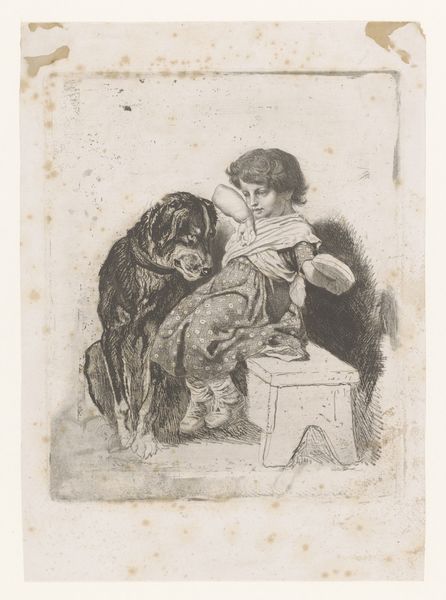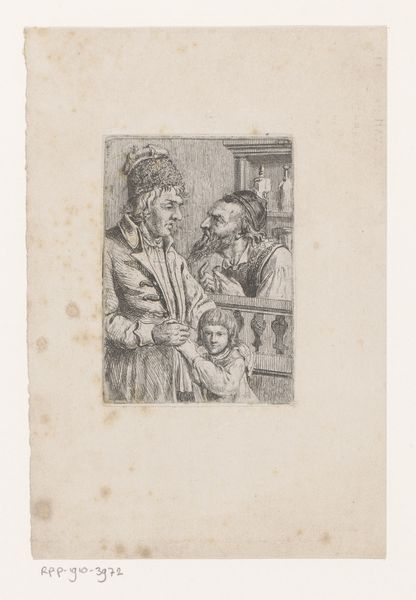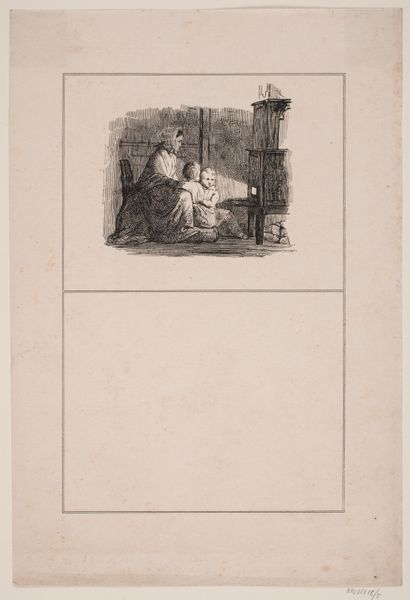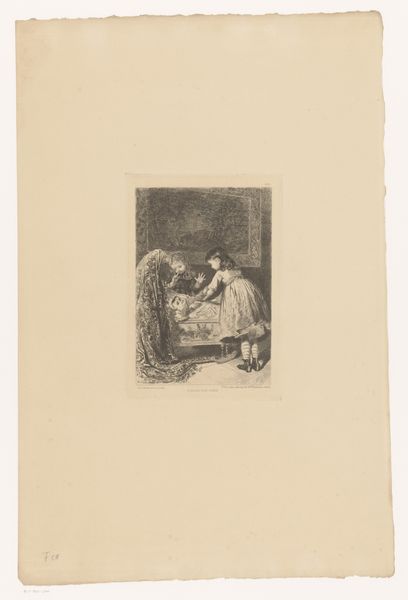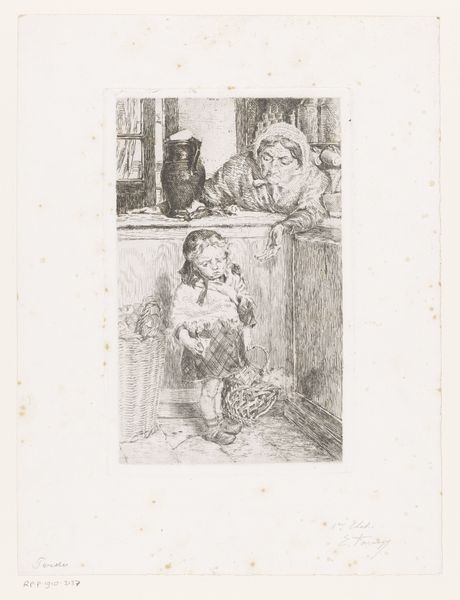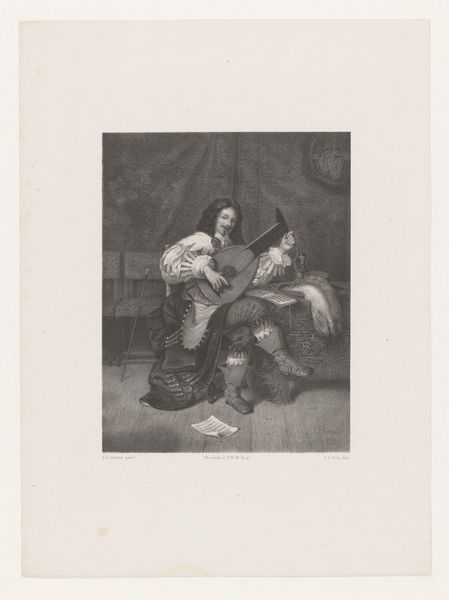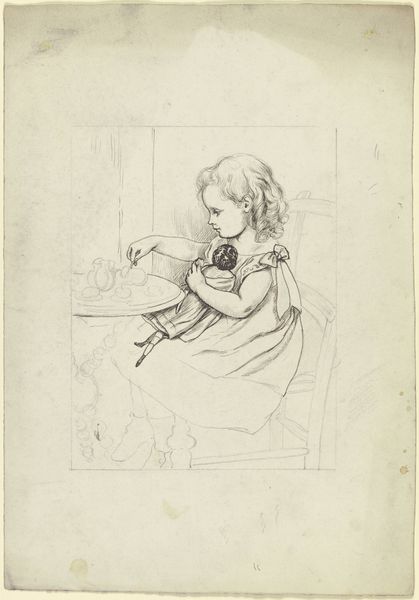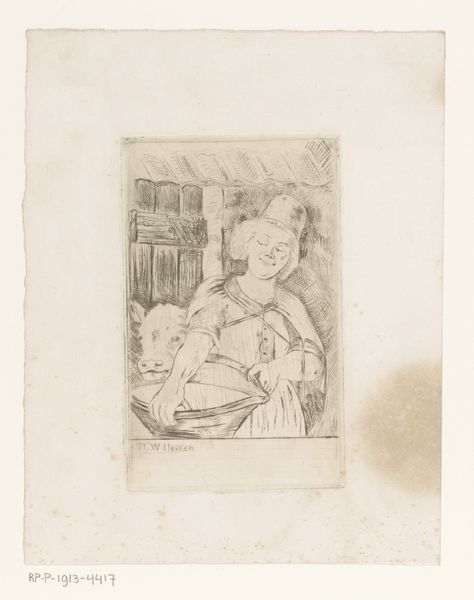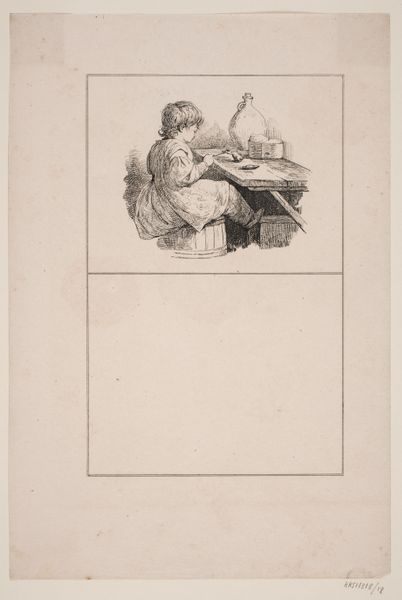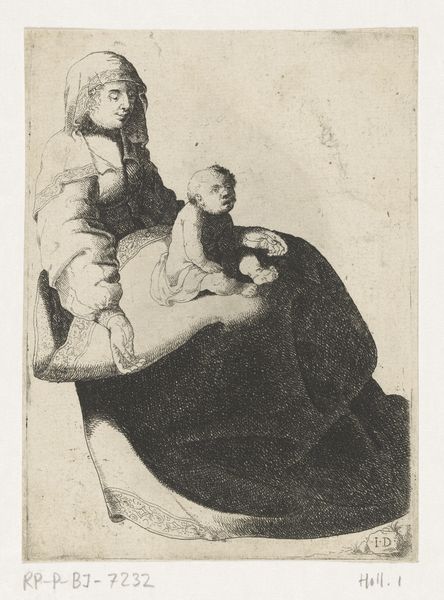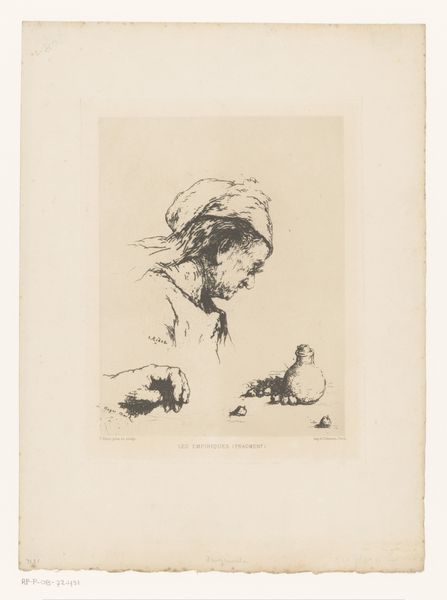
drawing, print, engraving
#
portrait
#
drawing
# print
#
pencil sketch
#
genre-painting
#
engraving
Dimensions: 124 mm (height) x 102 mm (width) (plademaal)
Curator: This piece is "A Boy with a Dog" by Jacob Kornerup, dating back to 1855. It’s currently housed here at the SMK, Statens Museum for Kunst. It's an engraving, falling into the genre painting category, I'd say. Editor: It feels surprisingly intimate, almost as though we're intruding on a quiet moment. Look at the incredibly delicate rendering; you can practically feel the softness of the dog's fur. But is it right to call this a genre painting, considering how much the boy's social station affects the art's interpretation? Curator: True, we have to consider the societal factors that inform the work. The materials, the engraving technique for instance, were more accessible for wider distribution. So the art would become part of domestic life for particular class levels. Think of who produced this work; Kornerup worked diligently to get admitted to the Academy and, in that context, was always negotiating social barriers of class through the act of making his art. Editor: Yes, and it becomes increasingly vital to highlight these access barriers as museum practices and the social hierarchies prevalent in artistic circles were actively being reformed during this time period. His social origins and networks definitely impacted how the artwork was seen and consumed. This boy could be the very vision of emerging domesticity for new groups of patrons during the 1850's. Curator: Absolutely. Let's not ignore what art represents to new types of consumers, in particular how labor in art became an open conversation in artistic production. In fact, how many of these new collectors would value such quiet moments within their families? Perhaps some wanted to learn values of caring, with domestic life displayed like this. Editor: An idealized representation of familial affection, easily reproduced for wider distribution and acceptance through art networks of that time. What’s next, shall we explore other materials from Kornerup? Curator: Definitely. I am intrigued by what the reception of a print would mean materially for consumption by different audiences from diverse income backgrounds. Editor: Indeed, and for me the focus remains: what public is art meant for, and how does institutional acceptance and distribution play a vital role?
Comments
No comments
Be the first to comment and join the conversation on the ultimate creative platform.
